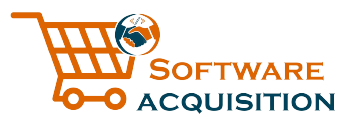In this guide, I will explain the process, definition, and importance of software acquisition for business growth and technological advancement in the United States.
Key Takeaways:
- Software acquisition is the process of acquiring custom software capabilities for the Department of Defense (DoD) in a timely and efficient manner.
- The DoD has established the Software Acquisition Pathway to provide a framework for the development, integration, and delivery of secure software.
- The Software Acquisition Pathway consists of two phases: the planning phase and the execution phase.
- Modern iterative software development methodologies, such as Agile and DevSecOps, are recommended for use in software development.
- Collaboration with end users and prioritizing their needs is essential throughout the software acquisition process.
Factual data: Software acquisition is the process of acquiring custom software capabilities for the Department of Defense (DoD) in a timely and efficient manner. The DoD has established the Software Acquisition Pathway to provide a framework for the development, integration, and delivery of secure software. The pathway consists of two phases: the planning phase and the execution phase. During the planning phase, the requirements, acquisition strategy, intellectual property strategy, test strategy, and cost estimates are established. The execution phase involves the design, development, integration, testing, delivery, deployment, operation, and monitoring of the software. Programs using the software acquisition pathway are not subject to the Joint Capabilities Integration and Development System (JCIDS) and are not considered major defense acquisition programs. The objective of the software acquisition pathway is to deliver viable and effective software capabilities to operational users within one year of the first funding obligation, with subsequent updates and deliveries occurring at least annually. Modern iterative software development methodologies, tools, and techniques, such as Agile and DevSecOps, are recommended for use in software development. Collaboration with end users and prioritizing their needs is essential throughout the process. Leveraging existing enterprise services and addressing cybersecurity and program protection are also important considerations in software acquisition.
Exploring the Software Acquisition Process
The software acquisition process involves several stages, including planning, execution, and management, to ensure the efficient acquisition of software capabilities. These stages are crucial for the successful development, integration, and delivery of secure software. The Department of Defense (DoD) has established the Software Acquisition Pathway, a framework that provides guidance for acquiring custom software capabilities in a timely manner.
During the planning phase, various aspects are addressed to establish a solid foundation for the acquisition process. This includes defining the requirements, acquisition strategy, intellectual property strategy, test strategy, and cost estimates. Thorough planning plays a vital role in ensuring that all key elements are considered and align with the intended goals of the software acquisition.
Once the planning phase is complete, the execution phase begins. This phase involves the design, development, integration, testing, delivery, deployment, operation, and monitoring of the software. Each step is carefully executed to guarantee a smooth and efficient process. The Software Acquisition Pathway emphasizes the importance of adhering to timelines and delivering viable and effective software capabilities to operational users within one year of the first funding obligation.
| Planning Phase: | Execution Phase: |
|---|---|
| Requirements definition | Design |
| Acquisition strategy | Development |
| Intellectual property strategy | Integration |
| Test strategy | Testing |
| Cost estimates | Delivery |
Software Acquisition Management
Effective software acquisition management is an integral part of the process. It ensures that the acquisition activities are executed in a coordinated and controlled manner. The management aspect involves overseeing the planning, execution, and monitoring of the software acquisition, while ensuring compliance with relevant guidelines and regulations.
- Thorough project management to oversee the entire software acquisition process.
- Regular monitoring and evaluation to track progress and identify potential risks or issues.
- Effective communication and collaboration among stakeholders, including end users, developers, and management.
- Continuous improvement through lessons learned and feedback from operational users.
“The software acquisition process involves careful planning, meticulous execution, and effective management to ensure the successful acquisition of software capabilities.”
In conclusion, the software acquisition process is a complex undertaking that requires careful attention to detail and adherence to established frameworks. The Software Acquisition Pathway provided by the Department of Defense serves as a valuable guide for acquiring software capabilities in a timely and efficient manner. By following this pathway, utilizing modern software development methodologies, and prioritizing collaboration with end users, organizations can achieve successful software acquisition and contribute to the growth and advancement of their business.
| Key Elements of Software Acquisition Management: |
|---|
| Thorough project management |
| Regular monitoring and evaluation |
| Effective communication and collaboration |
| Continuous improvement |
Understanding Software Acquisition Strategy
A well-defined software acquisition strategy is crucial for successful implementation, and this section will delve into the key aspects and best practices of developing such a strategy. When considering software acquisition, organizations must take into account various factors, including their specific needs, budget constraints, and long-term goals.
One of the first steps in creating a software acquisition strategy is conducting a thorough analysis of the organization’s requirements. This involves identifying the functionalities and capabilities that the software should possess to meet the organization’s objectives. By clearly defining the requirements, organizations can ensure that the acquired software aligns with their needs and minimizes the risk of investing in unnecessary features.
Another important aspect of software acquisition strategy is selecting the most suitable procurement method. This decision can significantly impact the success of the acquisition process. Organizations should consider various factors, such as cost, timeline, and complexity, when choosing between in-house development, off-the-shelf software, or custom software development. Each option has its own advantages and disadvantages, and the choice should be based on the organization’s unique circumstances.
Once the software acquisition strategy is developed, it is crucial to follow best practices throughout the implementation process. This includes conducting thorough vendor evaluations, assessing the software’s compatibility with existing systems, and establishing clear communication channels with all stakeholders. By adhering to best practices, organizations can increase the likelihood of a successful software acquisition that meets their requirements and delivers value.
| Key Aspects | Best Practices |
|---|---|
| Requirements Analysis | Clearly define software requirements to ensure alignment with organizational objectives. |
| Procurement Method | Evaluate different procurement options based on cost, timeline, and complexity. |
| Vendor Evaluation | Thoroughly assess vendors to ensure their capabilities and reliability. |
| Compatibility Assessment | Consider the software’s compatibility with existing systems and infrastructure. |
| Stakeholder Communication | Maintain clear and effective communication channels with all stakeholders involved in the acquisition process. |
Developing a robust software acquisition strategy and following best practices can significantly increase the chances of a successful implementation. By carefully considering requirements, selecting the appropriate procurement method, and adhering to best practices, organizations can acquire software that fulfills their needs and drives business growth.
The Role of the Department of Defense in Software Acquisition
The Department of Defense plays a significant role in software acquisition, ensuring the timely and efficient acquisition of custom software capabilities. As the largest employer in the United States, the DoD relies heavily on advanced software solutions to support its operations, decision-making processes, and overall mission readiness.
The DoD has established the Software Acquisition Pathway framework to guide the acquisition process for custom software development. This pathway aims to deliver viable and effective software capabilities to operational users within a year of the first funding obligation, with subsequent updates and deliveries occurring at least annually. By adhering to this framework, the DoD can streamline the acquisition process, reduce development cycles, and ensure that software capabilities align with the evolving needs of the military.
Within the Software Acquisition Pathway, there are two key phases: the planning phase and the execution phase. During the planning phase, critical aspects such as requirements gathering, acquisition strategy, intellectual property strategy, test strategy, and cost estimates are established. This phase lays the foundation for the subsequent execution phase, which encompasses the design, development, integration, testing, delivery, deployment, operation, and monitoring of the software.
While programs using the software acquisition pathway are not subject to the Joint Capabilities Integration and Development System (JCIDS) and are not considered major defense acquisition programs, they still play a crucial role in enhancing the DoD’s software capabilities. To ensure successful software acquisition, the DoD encourages the use of modern iterative software development methodologies, tools, and techniques, such as Agile and DevSecOps. Emphasizing collaboration with end users and prioritizing their needs throughout the process is essential, as it leads to the development of software solutions that truly meet operational requirements.
The Software Acquisition Pathway for the DoD
The DoD has developed the Software Acquisition Pathway to provide a structured framework for the development, integration, and delivery of secure software capabilities. This pathway consists of two distinct phases: the planning phase and the execution phase. During the planning phase, various essential elements are established, including the requirements, acquisition strategy, intellectual property strategy, test strategy, and cost estimates. These elements lay the foundation for the successful execution of the software acquisition process.
In the execution phase, the focus shifts to the actual design, development, integration, testing, delivery, deployment, operation, and monitoring of the software. It encompasses the entire lifecycle of the software, ensuring that it meets the required standards of quality and security. Throughout this phase, a user-centric approach is crucial, as it ensures that the software meets the needs and expectations of the end users.
To achieve effective software acquisition, modern iterative software development methodologies and techniques are highly recommended. Agile and DevSecOps, for example, offer efficient and flexible approaches that promote collaboration, rapid delivery, and continuous improvement. These methodologies empower development teams to adapt to changing requirements and deliver high-quality software within shorter timeframes.
Collaboration and communication with end users are paramount in the software acquisition process. By involving end users from the early stages, their feedback and insights can shape the development and ensure that the software aligns with their specific needs. Additionally, leveraging existing enterprise services and addressing cybersecurity and program protection are critical considerations in software acquisition. This helps to ensure the security and integrity of the software and protects against potential cyber threats.
The Software Acquisition Pathway provides a systematic and efficient approach for the DoD to acquire software capabilities that are essential for its operations. By following this pathway and implementing modern software development methodologies, the DoD can deliver secure, high-quality software to its operational users in a timely manner.
| Key Elements of the Software Acquisition Pathway | Description |
|---|---|
| Planning Phase | Establishes the requirements, acquisition strategy, intellectual property strategy, test strategy, and cost estimates. |
| Execution Phase | Involves the design, development, integration, testing, delivery, deployment, operation, and monitoring of the software. |
| Modern Development Methodologies | Agile and DevSecOps provide efficient and flexible approaches, promoting collaboration, rapid delivery, and continuous improvement. |
| End User Collaboration | Involving end users throughout the process ensures that the software meets their specific needs and expectations. |
| Enterprise Services and Cybersecurity | Leveraging existing enterprise services and addressing cybersecurity are crucial for the security and integrity of the software. |
Key Phases of the Software Acquisition Pathway
The Software Acquisition Pathway consists of two main phases: the planning phase, where requirements and strategies are established, and the execution phase, involving the design, development, and deployment of the software. These phases are crucial in ensuring the successful acquisition and delivery of software capabilities for the Department of Defense.
Planning Phase
In the planning phase, key aspects of the software acquisition are carefully defined and documented. This includes establishing the requirements, acquisition strategy, intellectual property strategy, test strategy, and cost estimates. It is during this phase that the groundwork for the entire software acquisition process is laid, ensuring a clear understanding of the project scope and objectives.
One of the key objectives of the planning phase is to establish a solid foundation for the development and integration of secure software. This involves conducting thorough risk assessments and addressing any potential challenges or obstacles that may arise throughout the acquisition process.
To ensure a successful planning phase, collaboration with stakeholders and end users is critical. By engaging with key individuals and gathering their input and insights, it becomes possible to align the software acquisition strategy with the needs and expectations of the end users. This user-centric approach helps to ensure that the software capabilities acquired will effectively meet operational requirements.
Execution Phase
Once the planning phase is completed, the execution phase begins. This phase involves the actual design, development, integration, testing, delivery, deployment, operation, and monitoring of the software. It is here that the software capabilities are brought to life and made available for operational use.
The execution phase follows a systematic approach, with each step building upon the previous ones. Agile and DevSecOps methodologies, known for their iterative and collaborative nature, are recommended for use in this phase. These modern software development approaches allow for flexibility, adaptability, and continuous improvement throughout the software acquisition process.
Throughout the execution phase, careful monitoring and evaluation of the software development progress are essential. Regular updates and deliveries should occur at least annually to ensure that the software remains viable, effective, and aligned with any changing operational requirements.
| Planning Phase | Execution Phase |
|---|---|
| Requirements definition | Design and development |
| Acquisition strategy determination | Integration and testing |
| Intellectual property strategy establishment | Delivery and deployment |
| Test strategy development | Operation and monitoring |
| Cost estimation |
Recommended Methodologies and Techniques in Software Development
Adopting modern software development methodologies and techniques is crucial for efficient software acquisition and development. Two widely recognized methodologies in the software industry are Agile and DevSecOps. These approaches prioritize collaboration, iteration, and incremental development, resulting in high-quality software that meets user requirements effectively.
The Agile methodology:
Agile focuses on iterative and collaborative development, breaking down projects into manageable tasks known as sprints. This methodology promotes adaptive planning, continuous feedback, and frequent software delivery. By involving stakeholders throughout the development process, Agile ensures that software solutions align with their evolving needs, leading to increased user satisfaction. Agile emphasizes self-organizing teams, close collaboration, and effective communication, fostering a flexible and responsive approach to software acquisition.
The DevSecOps methodology:
DevSecOps, an extension of DevOps, integrates security practices into every phase of the software development lifecycle. This approach emphasizes continuous integration, automated testing, and continuous monitoring, allowing for early identification and remediation of security vulnerabilities. DevSecOps promotes collaboration and information sharing between development, operations, and security teams, fostering a culture of shared responsibility for software security. By incorporating security into the development process from the outset, DevSecOps ensures the delivery of secure and reliable software solutions.
These modern software development methodologies provide numerous benefits for software acquisition. They enable rapid delivery of high-quality software, enhance flexibility and adaptability, and promote stakeholder involvement throughout the development process. By adopting Agile and DevSecOps, organizations can optimize their software acquisition efforts, ensuring the successful delivery of software capabilities that meet the evolving needs of the Department of Defense (DoD) and other stakeholders.
| Methodology | Key Features |
|---|---|
| Agile |
|
| DevSecOps |
|
Collaboration and User-Centric Approach in Software Acquisition
Collaboration with end users and prioritizing their needs are essential factors in successful software acquisition, despite the challenges that may arise. When acquiring software, it is crucial to involve end users from the early stages of the process to ensure that their requirements and expectations are met. By collaborating with end users, organizations can gain valuable insights into their specific needs, preferences, and workflows, which can significantly influence the development and implementation of the acquired software.
A user-centric approach allows organizations to tailor the software to meet the unique needs of their users and optimize its usability and functionality. This approach not only improves user satisfaction but also increases the likelihood of successful adoption and utilization of the software within the organization. By actively involving end users throughout the acquisition process, organizations can reduce the risk of developing software that does not align with their needs, resulting in wasted time and resources.
The Benefits of Collaboration
Collaboration with end users can yield several benefits in the software acquisition process. By involving end users, organizations can gain a deeper understanding of their requirements and expectations, allowing for more accurate and effective software planning and development. This collaboration can also facilitate the identification of potential challenges or roadblocks early on, enabling proactive problem-solving and risk mitigation.
By actively involving end users throughout the acquisition process, organizations can reduce the risk of developing software that does not align with their needs, resulting in wasted time and resources.
Moreover, collaboration fosters a sense of ownership and engagement among end users, as they feel valued and included in the decision-making process. This can lead to increased user satisfaction, productivity, and overall success of the software implementation. Regular communication and feedback loops with end users also allow for continuous improvement and iterative development, ensuring that the software evolves to meet changing needs and technological advancements.
Addressing Challenges
While collaboration with end users is crucial, it is not without its challenges. The diverse perspectives, expectations, and priorities of different user groups can make it difficult to reach consensus and prioritize features. It is important to establish effective communication channels and facilitate open dialogue to address potential conflicts and ensure that all voices are heard.
Additionally, the collaboration process requires dedicated time and resources, which may be limited in some organizations. Project managers and stakeholders must recognize the importance of user involvement and allocate sufficient resources to facilitate effective collaboration throughout the software acquisition journey.
Conclusion
In conclusion, collaboration with end users and prioritizing their needs are essential for successful software acquisition. By actively involving end users throughout the process, organizations can ensure that the acquired software aligns with their requirements and maximizes its value. While challenges may arise, effective communication, open dialogue, and resource allocation can overcome these obstacles and contribute to the overall success of the software acquisition endeavor.
| Benefits of Collaboration in Software Acquisition | Challenges in Collaboration |
|---|---|
|
|
Leveraging Enterprise Services and Addressing Cybersecurity
To ensure successful software acquisition, leveraging existing enterprise services and addressing cybersecurity and program protection are vital considerations. The Department of Defense (DoD) recognizes the importance of utilizing established enterprise services to streamline the acquisition process and maximize efficiency.
By leveraging existing enterprise services, such as cloud computing platforms and shared resources, the DoD can reduce costs and increase scalability. These services provide a robust infrastructure for software development, integration, and delivery, enabling organizations to accelerate their software acquisition efforts.
Furthermore, addressing cybersecurity and program protection is crucial in today’s digital landscape. The DoD places a strong emphasis on developing secure software to protect sensitive data and ensure operational readiness. Incorporating cybersecurity measures, such as encryption, authentication, and access controls, strengthens the overall security posture of acquired software.
In addition, program protection measures, such as anti-tamper technologies and secure coding practices, safeguard against potential threats and unauthorized access to critical systems. By integrating cybersecurity and program protection into the software acquisition process, the DoD can mitigate risks and ensure the confidentiality, integrity, and availability of acquired software.
Table: Key Considerations in Leveraging Enterprise Services and Addressing Cybersecurity
| Considerations | Explanation |
|---|---|
| Leveraging existing enterprise services | Utilizing established infrastructure and resources to optimize software acquisition efforts. |
| Addressing cybersecurity | Incorporating measures to protect sensitive data and ensure the security of acquired software. |
| Program protection | Implementing safeguards to mitigate risks and prevent unauthorized access to critical systems. |
By leveraging enterprise services and addressing cybersecurity and program protection, the DoD can enhance the effectiveness and security of its software acquisition efforts. These considerations contribute to the successful delivery of reliable and secure software capabilities to operational users, supporting the DoD’s mission and ensuring technological superiority for the United States.
Conclusion
Software acquisition is a crucial element for business growth and technological advancement, despite the challenges it may present. With the right framework and strategies in place, organizations can acquire and develop software capabilities that meet their specific needs.
The Department of Defense (DoD) has established the Software Acquisition Pathway as a framework for efficiently acquiring custom software capabilities. This pathway consists of two phases: the planning phase and the execution phase. During the planning phase, key aspects such as requirements, acquisition strategy, intellectual property strategy, test strategy, and cost estimates are established. The execution phase involves the design, development, integration, testing, delivery, deployment, operation, and monitoring of the software.
By following the Software Acquisition Pathway, programs can deliver viable and effective software capabilities to operational users within a year of the first funding obligation, with subsequent updates and deliveries occurring at least annually. It is worth noting that programs using this pathway are not subject to the Joint Capabilities Integration and Development System (JCIDS) and are not considered major defense acquisition programs.
To ensure success, modern iterative software development methodologies, tools, and techniques such as Agile and DevSecOps are recommended for use in software development. Collaboration with end users and prioritizing their needs throughout the process are also crucial. Moreover, leveraging existing enterprise services and addressing cybersecurity and program protection are essential considerations in software acquisition.
In conclusion, with a well-defined software acquisition framework and a user-centric approach, organizations can overcome the challenges associated with acquiring software capabilities. By adopting modern methodologies and collaborating closely with end users, businesses can unlock new opportunities for growth and stay at the forefront of technological advancements.
FAQ
What is software acquisition?
Software acquisition is the process of acquiring custom software capabilities for the Department of Defense (DoD) in a timely and efficient manner.
What is the software acquisition pathway?
The software acquisition pathway is a framework established by the DoD to provide a structured approach for the development, integration, and delivery of secure software.
What are the main phases of the software acquisition pathway?
The software acquisition pathway consists of two main phases: the planning phase and the execution phase.
What are recommended methodologies for software development?
Modern iterative software development methodologies, such as Agile and DevSecOps, are recommended for use in software development.
Why is collaboration with end users important in software acquisition?
Collaboration with end users is important in software acquisition to ensure that their needs are prioritized and integrated into the development process.
How can cybersecurity be addressed in software acquisition?
Addressing cybersecurity in software acquisition involves implementing measures to protect against cyber threats and ensuring program protection.
Source Links
- https://www.fhwa.dot.gov/publications/research/operations/its/98036/rdsuccessvol2.pdf
- https://www.esd.whs.mil/Portals/54/Documents/DD/issuances/dodi/500087p.PDF
- https://www.test-evaluation.osd.mil/Portals/120/Documents/TE Enterprise Guidebook/Ch5 from TE Enterprise Guidebook 8.02.pdf?ver=7g0ErIbnox_eSeN63K-KIQ==



